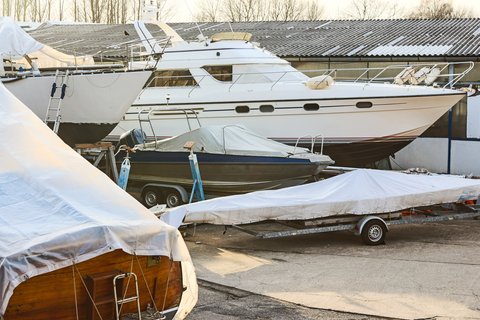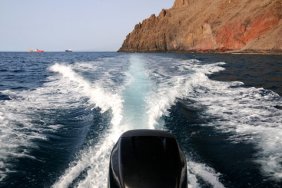Now that summer has come to a close and the weather is beginning to get cooler it’s a good time to start thinking about winterizing your boat.
It’s important especially in colder climates that your boat is prepared for months of disuse. We’ve outlined seven steps you can take to be sure your boat’s engine will start right up when you’re ready to use it again in the spring.
Fogging
Carburetors are especially sensitive in gasoline outboard engines. Many of the problems associated with disuse comes from corrosion. Keeping moving parts lubricated is a good way to prevent this. Fogging refers to applying lubricating oil, such as WD-40, into to the cylinders and pistons while the engine is running. You can spray through the carburetor or air intakes.
Silicone spray
In addition to lubricating the inside of the engine, you want to spray the entire block, linkages and wiring with silicone spray or another lubricant that dries to a waxy finish. This will help prevent corrosion and allow you to spot loose wires and fasteners.
Fuel stabilizer
Adding fuel stabilizer to the tank is a way to keep the existing fuel and your fuel intake system in good shape during the cold months. Add the stabilizer fuel just before your last fuel-up prior to storage so the chemicals will mix better in the tank and the engine can ingest the stabilized fuel. This has become even more important with the advent of Ethanol-additive fuel.
Oil change
It’s a good idea to change the oil before putting your boat away for the winter, but it’s best to do it after you’ve fogged the engine, that is, after you’ve sprayed lubricating oil into the carburetor and air intake. Also be sure to change the filter.
Antifreeze
Of course, if you live in an especially cold climate that reaches below freezing temperatures you are going to want to add antifreeze to your coolant system if you haven’t already. You want to flush out all water and add only biodegradable antifreeze.
Look for corrosion
Anything that sits in the water will have a fair amount of corrosion. The way to reduce corrosion to vital parts like engine shafts is to apply zincs. During any winterization you want to look for signs of corrosion and replace any zincs that been worn away.
Pull drain plugs
Whenever you pull your boat out of the water you want to remove the drain plugs so that no funky water gets trapped in the bilge. Be sure to put these plugs somewhere you will find them in the spring. You don’t want to be that guy who launches his boat without replacing the drain plugs. We’ve seen it happen.
Photo credit: Minzpeter | Dreamstime








